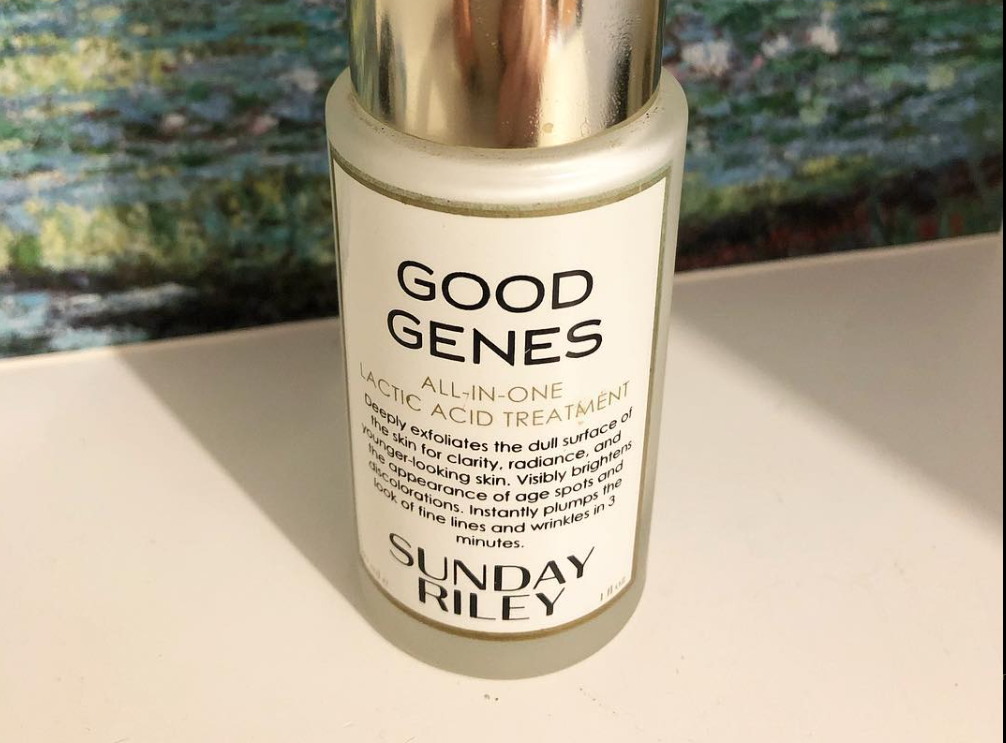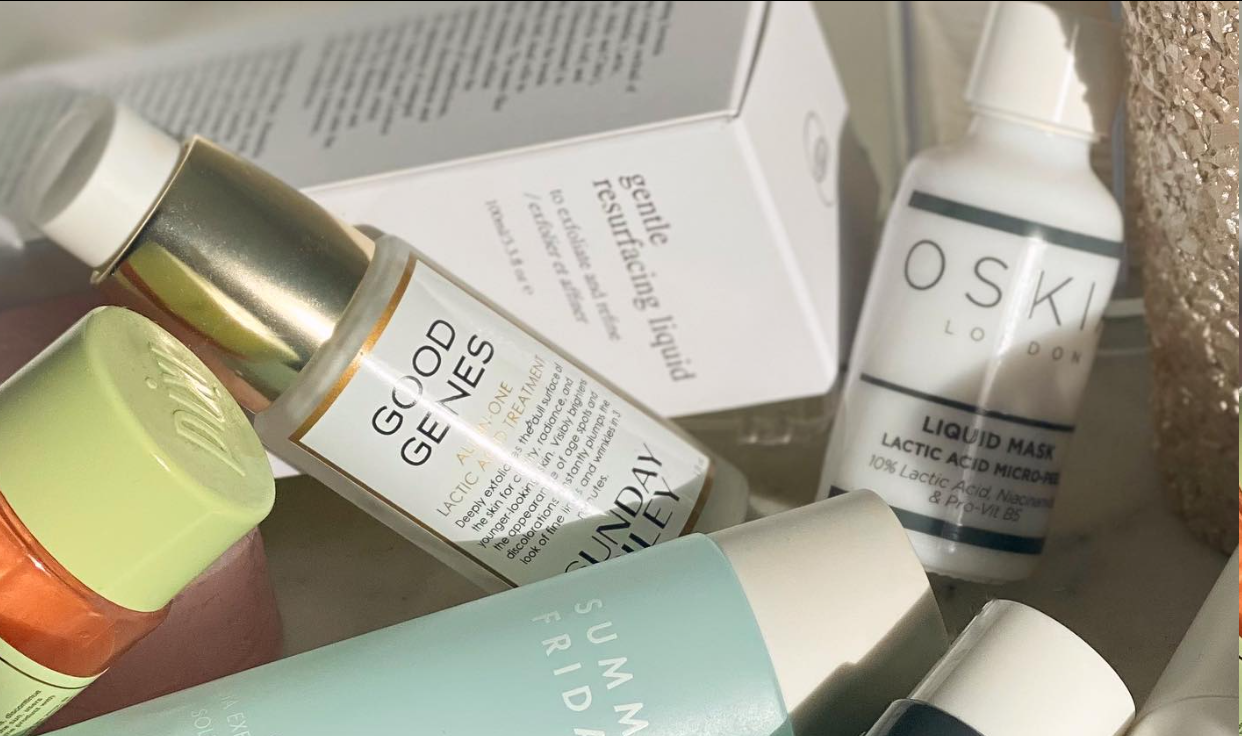For those seeking a radiant, youthful complexion, Good Genes Lactic Acid Treatment is a game changer. This article delves into the proper usage of this powerful exfoliant to unveil brighter, smoother skin. By harnessing the potency of lactic acid, Good Genes sloughs away dead cells and reveals the luminous skin beneath. Understanding the right way to integrate this treatment into your skincare regimen can dramatically improve skin texture and clarity.
Understanding Good Genes Lactic Acid Treatment

Lactic acid, an alpha hydroxy acid, gently exfoliates the skin to reveal a more even and glowing complexion. Good Genes, a standout lactic acid-based treatment, goes beyond exfoliating, offering a unique blend of ingredients designed to brighten, clarify, and smooth the skin’s surface. Its formulation includes botanicals and cleansers that support skin health, making it more than just an exfoliant; it’s a comprehensive skin-resurfacing treatment.
Preparing Your Skin for Good Genes Lactic Acid Treatment

To maximize the benefits of Good Genes Lactic Acid Treatment, preparing your skin is imperative. Start with a gentle cleanser to remove makeup, dirt, and oil. A well-prepped face allows for better absorption and effectiveness of the treatment. After cleansing, consider using a pH-balancing toner to restore your skin’s natural acid mantle, which is essential for the lactic acid to work effectively.
The key to harnessing the full potential of Good Genes Lactic Acid Treatment lies in its proper application. Cleanse your face thoroughly before dispensing one to two pumps of the product onto your fingertips. Gently apply in circular motions, covering the entire face. Avoid the eye area to prevent irritation.
Combining Good Genes with Your Current Skincare Regimen
Integrating Sunday Riley’s Good Genes, a popular lactic acid treatment, into your existing skincare routine can enhance your skin’s texture and brightness. Here are some tips to effectively use Good Genes alongside your other skincare products:
- Patch Test:Always perform a patch test to ensure you don’t have a reaction to the product, especially if you have sensitive skin.
- Cleanse First:Start with a gentle cleanser to remove impurities, allowing Good Genes to penetrate more effectively without interference from dirt or oil.
- Apply Good Genes:Use Good Genes as a serum step in your routine. It can be applied after toning but before heavier creams or oils. Allow it to absorb into your skin for a few minutes.
- Layer Carefully:If using during the day, follow up with a moisturizer and SPF. If used at night, it can be layered under a night cream to lock in the treatment and maximize efficacy.
- Avoid Conflicting Actives:Be cautious when mixing with other strong actives like retinols or other acids to avoid irritation. It’s often best to alternate these products (e.g., Good Genes one night, retinol another).
- Monitor Skin’s Response:Pay attention to how your skin reacts after introducing Good Genes, particularly if combining with other active ingredients. Reduce frequency if irritation occurs.
Real Results: Testimonials and Before & After Stories
The transformative nature of Good Genes is evidenced by its many users who share their success stories and before and after photos. Consistent use of the treatment has shown to produce significant improvements in various skin concerns, underlining its reputation as an effective skin-smoothing solution.
| User | Concern | Results | Duration |
|---|---|---|---|
| Jane D. | Hyperpigmentation | Decreased dark spots | 8 weeks |
| Alex M. | Acne and Scarring | Reduced acne and scarring appearance | 12 weeks |
| Rita S. | Fine Lines | Diminished fine lines | 10 weeks |
Conclusion
In conclusion, Good Genes Lactic Acid Treatment offers a robust solution to many common skincare concerns, from signs of aging to uneven skin texture. By following the instructions and incorporating it properly into your skincare routine, Good Genes can help reveal a brighter, smoother complexion. Consistency and following best use practices, such as applying sunscreen, are key to achieving the best results.
FAQs
As part of our commitment to comprehensive skincare education, we’ve compiled a list of frequently asked questions regarding the use of Good Genes Lactic Acid Treatment.
- How often should I use Good Genes Lactic Acid Treatment?
Begin with fewer applications, perhaps once or twice a week, and as your skin adjusts, you can increase usage up to five times a week if tolerated well. Always adhere to product guidelines and consider your skin’s sensitivity. - Can Good Genes be used on sensitive skin?
If you have sensitive skin, start with a patch test behind the ear. Based on your skin’s reaction, use the treatment less frequently, and under the guidance of a dermatologist if any concerns arise. - Will Good Genes help with acne scars?
Lactic acid promotes skin cell regeneration, which may help in the reduction of acne scars over time. Results, however, may vary and combining Good Genes with other targeted treatments could enhance the healing process. - Can I use Good Genes Lactic Acid Treatment in the morning?
Yes, you can use it in the morning, but always pair it with a high-SPF, broad-spectrum sunscreen to protect your skin from increased sun sensitivity caused by AHAs. - How long does it take to see results from using Good Genes?
Some immediate effects may be noticeable, such as a brighter complexion. However, more profound changes, like enhanced skin texture and reduced hyperpigmentation, usually become apparent after several weeks of consistent use.
